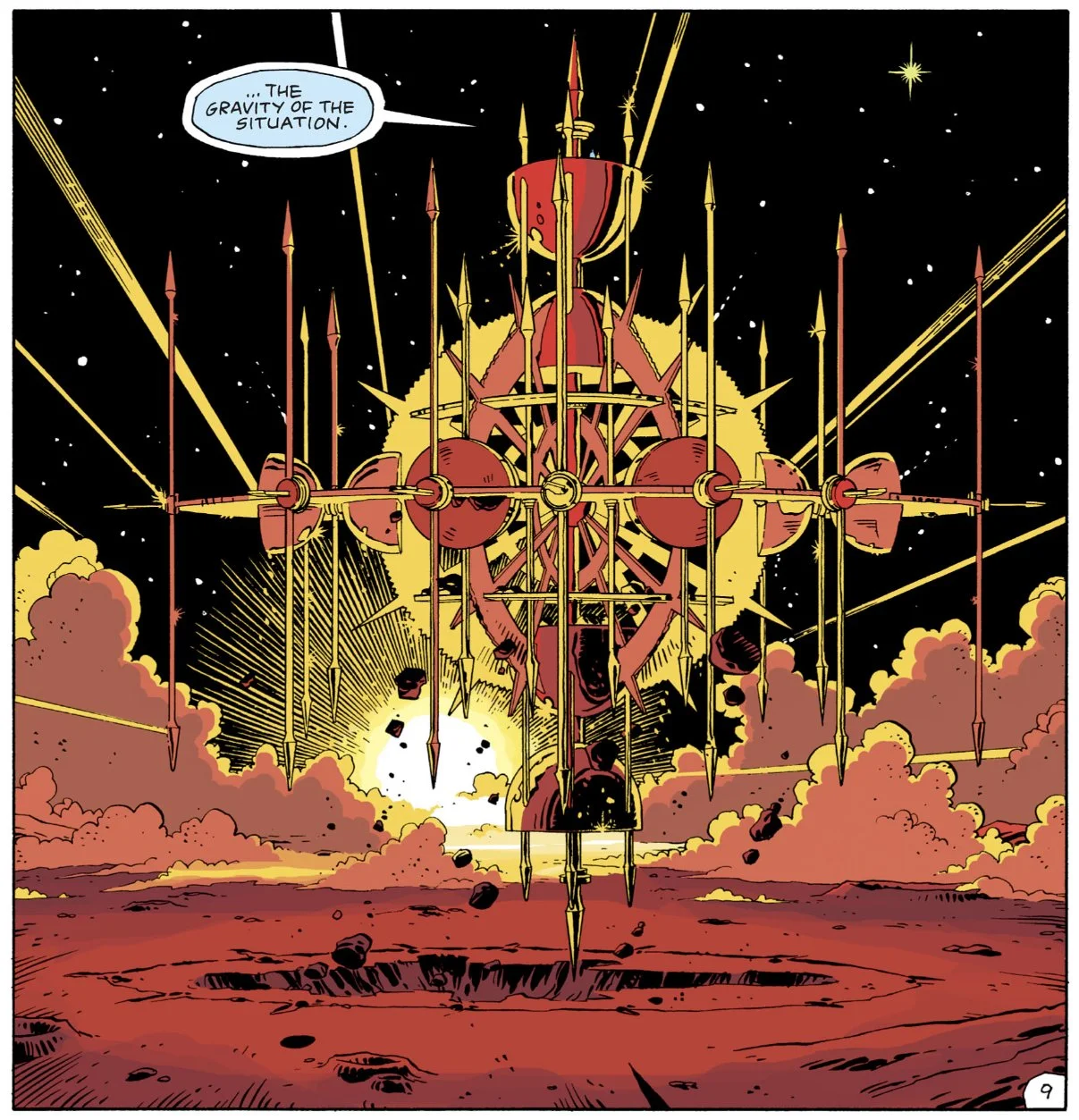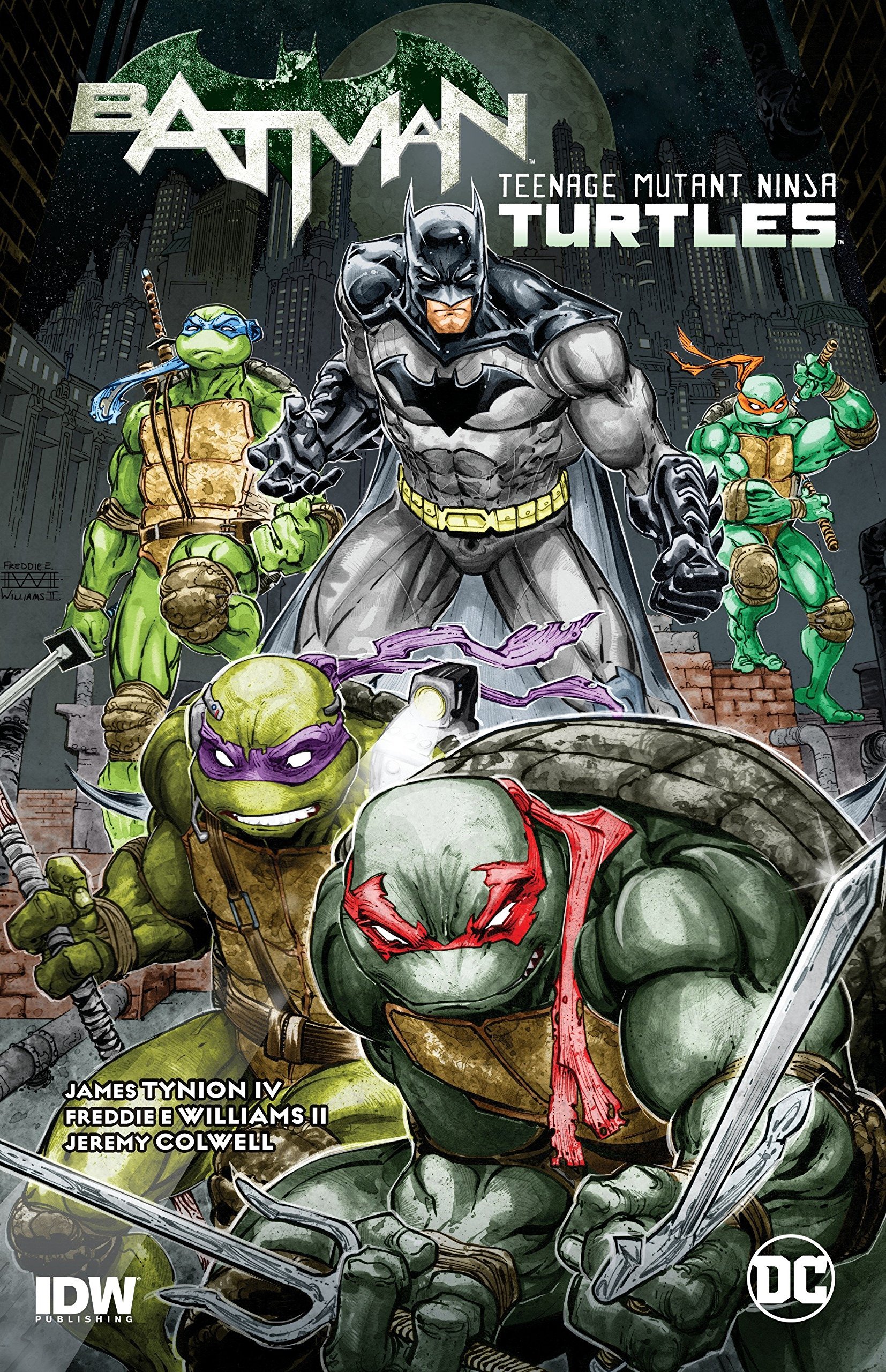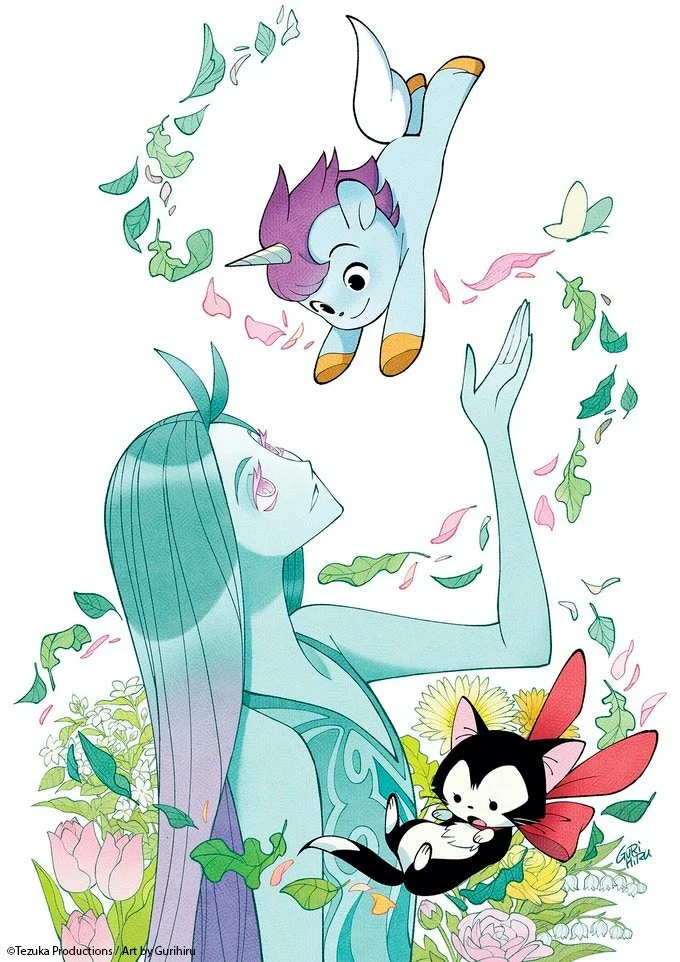The Man Without Fear...By The Year: Daredevil 1986, 'the most important year in comics'
By Bruno Savill De Jong — It’s 1986. The Challenger Space Shuttle fatally explodes on live TV, the first case of Mad Cow Disease is recorded, Martin Luther King Day is observed as a federal holiday and the Chernobyl Nuclear Reactor undergoes a critical chain reaction. People are listening to “Livin’ On A Prayer,” watching Top Gun and reading Daredevil.
1986 has often been cited as the Most Important Year in Comics. Mark Waid said “in the world of superhero comics, the pivotal moment wasn’t a specific publication; it was a specific year: 1986.” But it went beyond the capes-and-cowls crowd as a monumental shift for the entire medium. As the direct market grew through the ‘80s, new publishers sprang up in 1986 like Gladstone and Dark Horse Comics. Additionally, the first volume of Art Spiegelman’s Maus was sold in bookstores, necessitating the classification of the “Graphic Novel” section, and proving to mainstream society that comics could be “Serious Literature.”
But Waid was not wrong that it was a pivotal year for superhero comics. DC concluded its ambitious company-wide Crisis on Infinite Earths event, streamlining and revamping its key characters with John Byrne’s The Man of Steel and George Pérez’s Wonder Woman. Marvel took a different, but no less important, turn with the “Mutant Massacre” crossover. This tied all the X-books together, and its huge success made line-wide events an almost annual occurrence.
But what most remember of 1986 are the canonical texts that signalled the Dark Age of Comics; Alan Moore and Dave Gibbons’ Watchmen and Frank Miller’s The Dark Knight Returns. While the former used Charlton Comics archetypes for a novelistic approach to Cold War geopolitics, the latter used the IP itself for a dystopian deconstruction of Batman. But published the same year as these, Frank Miller returned to the series where he made his name and, arguably, began the trend of “mature” superheroes. He (alongside David Mazzuchelli’s illustrations) broke down and interrogated Matt Murdock in another highly-esteemed 1986 masterpiece: Daredevil: Born Again.
Written by Dennis O’Neil (226), Frank Miller (226-233), Mark Gruenwald (234), Danny Fingeroth (235), Ann Nocenti (236), John Harkness (actually Steve Englehart) (237)
Illustrated by David Mazzuchelli (226-233), Steve Ditko (234-235), Barry Windsor-Smith (236), Louis Williams (237)
Inks by Dennis Janke (226), David Mazzuchelli (227-233), Klaus Janson (234), Danny Bulandi (235, 237), Bob Wiacek (236)
Colours by Christie ‘Max’ Scheele (226-227, 229-237), David Mazzuchelli (228)
Lettered by Joe Rosen (226-237)
It all starts with Karen Page. She was last seen in Daredevil a decade ago, 1976’s appropriately titled “Where is Karen Page?” (Daredevil #138), where she and Matt gently parted ways as she pursued LA stardom. But Born Again starts in a seedy dim-lit office, with Karen having fallen into heroin addiction and pornography. By dragging the idyllic Silver Age blonde into a sleazy “realistic” world, Frank Miller makes a definitive statement about burning down the pristine silliness of Daredevil’s past. Karen will later think “it seems so stupid with Foggy here – he’s part of another world – when Karen Page was pretty and innocent and Foggy’s secretary.” But in Born Again that innocent world is eviscerated when Karen is so desperate for her next fix she sells off Matt Murdock’s secret identity. The information makes its way to the Kingpin, who proceeds to make Daredevil’s life a living hell.
Not that things were going great before this. Daredevil faces constant struggles, but he’s recently faced acute anguish from Elektra’s death and Heather Glenn’s suicide. Kingpin ponders how “even before his ruin, he was nearly mad,” as shown by the first issue of 1986, “Warriors” (Daredevil #226), which bridges the gap between Denny O’Neil and Frank Miller by being co-written by both of them. Although not directly connected to Born Again, “Warriors” is often included in trades from Miller’s writing credit, preluding the immense dissatisfaction in Matt’s life. He ruminates on his age, the blindness he kept even after The Beyonder offered its removal, the constant pressure of being Daredevil; “that’s what life has turned into. One thing after another to deal with… he wonders when the city started making him sick.” Matt’s depression makes him push away Glorianna O’Breen (into the arms of recently-separated Foggy Nelson), despair at The Gladiator’s apparent recidivism and even cast aside his work as a lawyer after Nelson & Murdock fails to pay their lease.
Daredevil doesn’t know what he has until it’s gone. Using knowledge of his secret-identity, the Kingpin proceeds to systematically destroy every aspect of Matt’s life. He enforces his disbarment, freezes his bank account, and explodes his apartment with his costume inside – a costume Matt will not wear again until near the end of Born Again. Daredevil is stripped of everything, pushing himself into a paranoid manic-depressive isolation, necessitating a rebirth from the rubble.
Even as Matt’s external life is demolished, the riveting Born Again functions as an internal battle of his soul. Previous stories (including those by Miller) had the calculating Kingpin permit Daredevil to operate in a symbiotic relationship which never threatened his true operations. Now, Kingpin is sadistically obsessed with torturing Matt Murdock, taking great pleasure in having “disgraced, destroyed and murdered the only good man he has ever known.” It seems Kingpin is opposed to Daredevil’s own “goodness” and seeks to snuff it out. In Born Again the Kingpin not only acts evil, he comes to represent it, using his extensive network to prey upon others’ vices and vulnerabilities to make them answer to him. After Kingpin personally sends Matt to a watery grave, he proudly stands above the corrupted city that he has infected. Yet Kingpin is still obsessed because “there is no corpse,” he has not fully extinguished the potential for goodness that lies inside humanity.
This is mirrored by Ben Urich’s segments in Born Again, who also overcomes the Kingpin’s intimidation to fight back against him. Given that Ben also knows the truth about Daredevil, he sees through the false accusations against Matt, confronting the cop (whose son is on Kingpin’s life-support) who swore that Matt made bribes. Yet Urich is intimidated by Kingpin’s henchmen, and – in a horrific expressionistic sequence – listens to the cop being murdered over the telephone as punishment for snitching. J. Jonah Jameson tries to coerce Urich’s story, saying he has “the most powerful weapon in the world” with the written word. But Kingpin’s omniscient presence makes Urich scared to even think Matt’s name. It isn’t a clean or easy road back to courage – Urich has to kill someone in self-defense – but he also finds the conviction inside him.
The threats and intimidation against Urich add to the layered tension within Born Again. This is a story where Matt’s water and heat are turned off, and you can feel his poverty as he counts cash in his pocket or describes his broken ribs. Born Again is an intimate and street-level storyline, emphasizing the hardship and exhaustion of Matt’s journey. Even Turk Barrett – usually a recurring joke character, here dressed up as Santa Claus in another get-rich-quick scheme – stabs Matt in the street. Matt goes through every indignity and sinks to his lowest point, before finding his way back to recovery, donning his red Devil costume again amongst flames like a Phoenix rising from the ashes.
All of this is enhanced by Mazzuchelli’s superb artwork. Mazzuchelli simultaneously delivers clean-cut linework which is littered with flecks of detail, bringing Miller’s vision of a dirty and seedy New York to life. Mazzuchelli brings urgent illustrations to all the compositions, elevating the kinetic and tactile nature of Born Again through the wonderful frailty of the figures, especially the increasingly gaunt Karen Page. But it’s also peppered by moments of experimentation, like the aforementioned zoom in on Urich as he listens to a murder through the phone, Christie Scheele’s coloring reflecting his horrified reaction. The artistic team on Born Again helps drag it down to a gritty street-level, but do so with stunning and gorgeous detail.
With hindsight, you can see where Frank Miller’s signatures went off the rails. Miller’s staccato and rhythmic writing would increase in Sin City and reach self-parody by All-Star Batman and Robin, and even in Born Again there are tics of an overly-loquacious Kingpin henchman and an increased reliance on narration when so much of Miller’s original Daredevil had been marked by silence. Yet Miller’s writing works here, going between Urich’s hard boiled journalism, Kingpin’s luxuriating sadism, and Karen and Matt’s increasingly feverish inner-monologues.
More tough is Miller’s depiction of female characters. It became a running joke that Miller could only write women as sex workers, and Karen Page’s turn to pornography and prostitution is framed as “selling her soul” which she runs to Matt and Foggy to save herself from. Karen is framed as weak and helpless, needing Matt to rescue her from indulging in more heroin even after she sold him out. Likewise, Glorianna becomes oddly single-minded in her photojournalism for the Daily Bugle, with Ben Urich (twice) needing to save her from danger. However, Glori’s growing relationship with Foggy is not framed as a “betrayal” of Matt but rather a natural and sweet development from both being spurned by him. And Matt never judges Karen for what she set in motion, the story treating her sympathetically as her spiritual “redemption” matches Matt’s physical one.
Also intriguing, in hindsight, are the arguably leftist politics of Born Again. Frank Miller infamously lambasted the Occupy Wall Street protestors and then made the jingoistic and Islamophobic Holy Terror. But back in 1986 Miller appears to be right alongside the 2011 protestors in depicting the Kingpin’s capitalist greed as corroding American society. The Kingpin describes himself as “a corporation – in the conglomerate that is America,” framing Daredevil and the law as “legislation” which has stalled his “free enterprise.” Kingpin represents unrestricted capitalism, which he argues is the promise of America. Attacking the rich and powerful is not unique (Miller does the same thing in Batman: Year One) but it adds a specific lens to Born Again of how individuals suffer when the system can be bought and rigged.
Miller’s politics become more blatant with the explosive introduction of Nuke. Nuke is introduced as a successor to Captain America; but while Cap represents the (idealized) American Dreams of the 1940s, Nuke represents the depraved military-industrial complex of the Vietnam generation, burning civilians with napalm and brainwashed to attack anybody declared “unpatriotic.” Nuke is the twisted and ugly form of patriotism, tattooing an American Flag on his face in a perverse parody of Cap’s costume. Nuke functions as a physical adversary Daredevil can battle in Hell’s Kitchen, but he also exposes the dark side of American militarism.
Even if Nuke is somewhat tacked-onto the ending of Born Again, the storyline is mostly one of personal redemption for Matt as he falls and rises. It is littered with religious imagery, with Matt falling three times during his downfall (like Jesus during the Crucifixion) before winding up recovering in a church. He is nursed to health by Sister Maggie, a nun strongly implied to be his mother, and there reconnects with a Catholic faith only hinted at beforehand. Like Christ, Matt Murdock must “die” for his sins before being reborn. He must journey through darkness before he sees the light. And despite (or maybe because of) its roughness, Born Again concludes with an incredibly optimistic ending. Daredevil has had everything taken away from him, and not gotten most of it back. But all the accoutrements of his life are shown to be extra on a simple foundation. As he and Karen walk smiling in the sun, Matt’s narration says;
“My name is Matt Murdock. I was blinded by radiation. My remaining senses function with superhuman sharpness. I live in Hell’s Kitchen and do my best to keep it clean.
That’s all you need to know”
Almost as interesting to me as these seismic stories is how the remainder of 1986 reacts to it. And the immediate next issue after Born Again is fascinating in how it blatantly ignores (and seems to intentionally contradict) the tone and impact of the storyline beforehand. “Madcasting” (Daredevil #234) is a zany fill-in issue guest-written by Mark Gruenwald featuring his creation Madcap, a nonsensical amoral prankster who can instantly heal from any injury. Unlike Born Again’s textured display of Matt’s mental illness, Madcap hypnotically induces “madness” that makes people cluck like chickens. Instead of the brutal injuries Matt endured in Born Again, Madcap can recover from any wound and is impervious to pain, laughing as he recovers from a fire. Even the fact that “Madcasting” features The Rose, the son of the Kingpin, completely ignores a mention of his father’s latest schemes. Gruenwald pens the tale with now arcane slang (like a TV producer exclaiming Madcap’s “Boffo footage”) with traditional layouts by Steve Ditko, rendering the immediate aftermath of Born Again as a story more suited to 1966 than ‘86.
That being said, “Madcasting” does depict Daredevil as more brutal and intimidating than he was in the Silver Age, threatening to knock one “hoodlum’s” teeth in. And the other 1986 issues in the aftermath of Born Again reckon with the shattered remnants of his double-identity following those events, commenting how “he kept getting crazier and crazier until he somehow broke through and fought his way back to sanity.” Both #235 and #237 depict Matt as leaning on his Daredevil persona, since his civilian life has been destroyed, forcing his attention upon the costumed-persona he recently reclaimed. Daredevil even battles a Mr. Hyde who worries his chemical indulgence means he cannot return back to a “human” form, reminding Daredevil how lucky he is to be able to choose between the two. And in #237 the Black Widow is also concerned about Matt’s tattered life, including her snide comments about returning to Karen Page (Natasha believing she was the ‘rebound’ from Karen) that makes Matt too sympathetic to drug users (Natasha being involved in a Reaganesque “Just Say No” scheme).
CW// Suicide mention
But it’s the penultimate 1986 issue I want to focus on; “American Dreamer” (#236). Given 1986 was, among other things, the 25th Anniversary of Marvel Universe, Jim Shooter decided each November issue – which #236 was - would have a portrait of the main character on their cover. And “American Dream” picks up on Born Again’s thread of Nuke, having Black Widow and Daredevil hunt down another super-soldier from the same program, suicidal after the false promise of American service. Unlike the other issues post-Born Again, “American Dreamer” does not have retro styling, but it also is not a rehash of Frank Miller. Unlike the crisp and compact pencils of Mazzuchelli, “American Dreamer” features the elongated and intense illustrations of Barry Windsor-Smith. And although the tone is also dark and grim, it is not copying Miller’s noir but concocting a feverish psychological thriller with Allen Ginsberg styled poetic howls, as Jack Hazzard kills himself amongst the 4th of July celebrations. “American Dreamer” was written by Ann Nocenti, whose long and celebrated run on Daredevil would start next year.
Read classic Daredevil Comics!
Check out past installments from The Man Without Fear…By The Year!
Check out Bruno Savill De Jong’s last regular series, Gotham Central Case by Case!
Bruno Savill De Jong is a recent undergraduate of English and freelance writer on films and comics, living in London. His infrequent comics-blog is Panels are Windows and semi-frequent Twitter is BrunoSavillDeJo.












